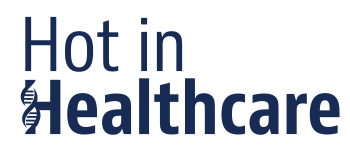Tariffs and shifting trade dynamics continue to disrupt healthcare and life sciences supply chains. But in addition to affecting operational and commercial outlooks for business, they are also revealing new opportunities for innovators and investors. In the final article of the series, we explore five key questions:
As supply chains shift and vendor arrangements evolve in response to tariffs, life sciences companies must adapt to increasingly intricate and intertwined challenges across operational and commercial needs. Manufacturing relocation, technology adoption, and new vendor partnerships require careful oversight of labor, compliance, human rights, and union matters. Protecting IP and data is vital against brand, legal, and cyber risks. Early IP registration, strong contracts, audits, and compliance help manage regulations and reduce Anti-Money Laundering (AML)…

In brief On September 11, 2025, the U.S. Department of Health and Human Services (“HHS”) Office of Inspector General (“OIG”) released a favorable advisory opinion (“AO 25-10”), addressing a financial arrangement between a healthcare services company (the “Company”) and a non-profit, tax-exempt, charitable foundation (the “Foundation”), pursuant to which the Company helped establish and makes donations to the Foundation and the Foundation provides financial assistance to families of children receiving a particular type of behavioral…
Amid fluctuating tariffs and complex trade policies, healthcare and life sciences (HLS) companies face mounting operational and legal challenges within their global supply chains. Organizations are taking steps to retool their supply chains in response to threats against stability, but change introduces myriad knock-on implications. In the second article of the series, we explore four key questions for HLS businesses considering new supply chain strategies:
The healthcare and life sciences sector is facing new trade winds and a looming threat of increased tariffs. This places additional pressure on a typical life sciences supply chain timeline. We recently launched a four-part article series on supply chains, aimed at exploring the legal and operational complexities that healthcare and life sciences companies face as they navigate evolving global supply chain challenges. The first article explores the steps companies can take to ensure business…
With its ruling in Apothekerkammer Nordrhein v. DocMorris (Case C-517/23), the Court of Justice of the European Union (CJEU) provided further clarity on the interpretation of EU law concerning the advertising of medicinal products, with a particular emphasis on prescription-only (Rx) medicinal products. Most importantly, the CJEU ruled that advertising unspecified Rx medicinal products by offering price reductions (cash discounts) and payments falls outside the EU law concept of medicinal product advertising. Recently, in a…
In the race to innovate, life sciences companies are betting big on M&A, but navigating the risks requires smarter deal structures Big pharmaceutical companies facing patent cliffs. MedTech companies seeking access to the latest AI technologies. Across the life sciences industry, companies have strong incentives to use M&A to grow their product pipelines, enhance their existing product offerings, and gain access to new markets. But, at what cost? Less than half of phase II clinical…
Political compromise raises questions around feasibility implementation and EU’s innovation edge After nearly two years of negotiations, the Council of the EU has adopted its negotiating position on the proposed revision of the pharmaceutical legislation on 4 June 2025. This milestone reached under the Polish presidency follows intense debate and numerous concessions among Member States. The most divisive issues of access to medicines and incentives for pharmaceutical innovation are likely to remain a balancing act…
On International Clinical Trials Day, the UK’s MHRA unveiled a major shift: a consultation on using external control arms (ECAs) based on real-world data (RWD) for regulatory decisions. This move aims to leverage patient-level data collected outside clinical studies to compare the efficacy and safety of interventions in clinical trials. Stakeholders have until the end of June to weigh in. What’s the Focus? The guidelines target sponsors planning to use RWD ECAs in trials needing…
On May 12, 2025, the White House issued a wide-reaching Executive Order (“EO”) titled “Delivering Most Favored Nation Prescription Drug Pricing to American Patients” for the stated purpose of ensuring that American patients will have access to the most-favored-nation (“MFN”) price for prescription drugs and biologics.1 This EO came out about one month after the release of EO No. 14273 titled “Lowering Drug Prices by Once Again Putting Americans First” (April 15, 2025) which outlined…








